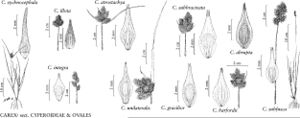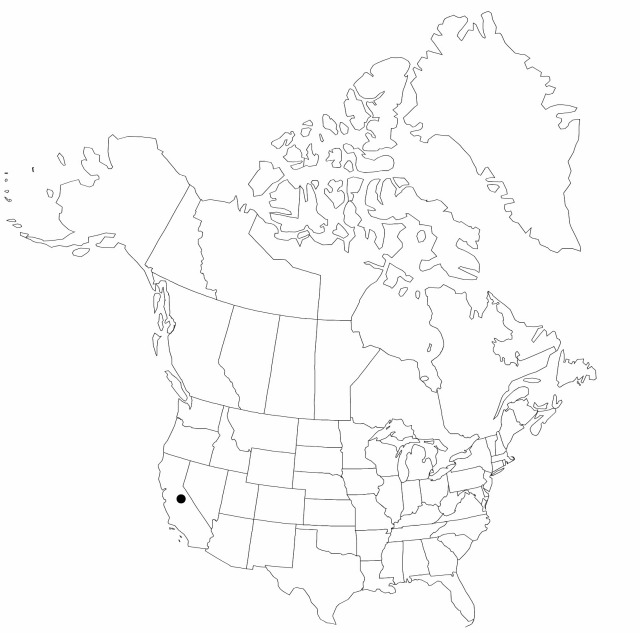Difference between pages "Adelia" and "Carex subbracteata"
Bull. Torrey Bot. Club 43: 612. 1917.
FNA>Volume Importer |
FNA>Volume Importer |
||
| Line 1: | Line 1: | ||
{{Treatment/ID | {{Treatment/ID | ||
| − | |accepted_name= | + | |accepted_name=Carex subbracteata |
| − | |accepted_authority= | + | |accepted_authority=Mackenzie |
|publications={{Treatment/Publication | |publications={{Treatment/Publication | ||
| − | |title= | + | |title=Bull. Torrey Bot. Club |
| − | |place= | + | |place=43: 612. 1917 |
| − | |year= | + | |year=1917 |
}} | }} | ||
| − | |||
|basionyms= | |basionyms= | ||
|synonyms= | |synonyms= | ||
| − | |hierarchy= | + | |hierarchy=Cyperaceae;Carex;Carex sect. Ovales;Carex subbracteata |
| − | |hierarchy_nav=<div class="higher-taxa"><div class="higher-taxon"><small>family</small>[[ | + | |hierarchy_nav=<div class="higher-taxa"><div class="higher-taxon"><small>family</small>[[Cyperaceae]]</div><div class="higher-taxon"><small>genus</small>[[Carex]]</div><div class="higher-taxon"><small>section</small>[[Carex sect. Ovales]]</div><div class="higher-taxon"><small>species</small>[[Carex subbracteata]]</div></div> |
| − | + | |volume=Volume 23 | |
| − | |volume=Volume | + | |mention_page=page 332, 345, 348 |
| − | |mention_page=page | + | |treatment_page=page 347 |
| − | |treatment_page=page | ||
}}<!-- | }}<!-- | ||
| − | --><span class="statement" id="st-undefined" data-properties=""><b> | + | --><span class="statement" id="st-undefined" data-properties=""><b>Plants </b>densely cespitose. <b>Culms</b> often lax, supported by other vegetation, 27–105 cm. <b>Leaves</b>: sheaths white-hyaline or green-veined with central white-hyaline strip, summits U-shaped to rounded, sometimes prolonged beyond collar; distal ligules 1.5–5.5 mm; blades 3–6 per fertile culm, 12–65 cm × 1.3–3.7(–4.6) mm. <b>Inflorescences</b> dense to open, green and brown, gold and brown, or brown, 1.3–3.5 cm × 7–23 mm; proximal internode 2–3(–4.5) mm; 2d internode 1–3 mm; proximal bracts bristlelike or rarely leaflike, longer than inflorescences. <b>Spikes</b> 4–11, densely aggregated, at least proximal 1–3 distinct, ovoid to broadly ovoid, 6–12.3 × 3.8–9.1 mm; base rounded; apex acute to rounded. <b>Pistillate</b> scales brown, red-brown, or coppery, with whitish, green, or pale brown midstripe, ovate, (3.2–)3.5–4.5 mm, shorter, narrower than, or covering perigynia, margin often indistinct, white, 0–0.4 mm wide, apex ± obtuse or rarely short-awned. <b>Perigynia</b> ascending to spreading, straw colored or gold to coppery, conspicuously (0–)5–9-veined abaxially, conspicuously 0–6-veined adaxially, veins not reaching top of achene, ovate to broadly ovate, plano-convex to biconvex, (2.9–)3.5–4.7(–5.7) × 1.2–1.7(–2.2) mm, 0.5–0.75 mm thick, ± leathery, margin flat, including wing 0.2–0.4 mm wide, ciliate-serrulate at least on distal body, with metallic sheen; beak often brown to dark brown at tip or white-hyaline, cylindric, unwinged, abaxial suture inconspicuous, distance from beak tip to achene 1.5–2.2(–2.6) mm, ± entire for (0.3–) 0.4–0.8 mm. <b>Achenes</b> broadly ovate to quadrate, 1.3–2.1 × 1–1.5(–1.7) mm, 0.5–0.6 mm thick.</span><!-- |
-->{{Treatment/Body | -->{{Treatment/Body | ||
| − | | | + | |phenology=Fruiting spring–summer. |
| − | |discussion=<p> | + | |habitat=Meadows, swales, moist places, roadsides, along the coast and in Coast Ranges |
| − | + | |elevation=0–900 m | |
| + | |distribution=Calif. | ||
| + | |discussion=<p><i>Carex</i> subbracteatais very similar to and perhaps conspecific with <i>C. gracilior</i> (R. Whitkus 1988).</p> | ||
|tables= | |tables= | ||
| − | |references= | + | |references= |
| − | |||
| − | |||
| − | |||
| − | |||
| − | |||
| − | |||
}}<!-- | }}<!-- | ||
| Line 37: | Line 31: | ||
-->{{#Taxon: | -->{{#Taxon: | ||
| − | name= | + | name=Carex subbracteata |
| − | |author= | + | |author= |
| − | |authority= | + | |authority=Mackenzie |
| − | |rank= | + | |rank=species |
| − | |parent rank= | + | |parent rank=section |
|synonyms= | |synonyms= | ||
|basionyms= | |basionyms= | ||
| − | |family= | + | |family=Cyperaceae |
| − | | | + | |phenology=Fruiting spring–summer. |
| − | |reference= | + | |habitat=Meadows, swales, moist places, roadsides, along the coast and in Coast Ranges |
| − | |publication title= | + | |elevation=0–900 m |
| − | |publication year= | + | |distribution=Calif. |
| + | |reference=None | ||
| + | |publication title=Bull. Torrey Bot. Club | ||
| + | |publication year=1917 | ||
|special status= | |special status= | ||
| − | |source xml=https://jpend@bitbucket.org/aafc-mbb/fna-data-curation.git/src/f6b125a955440c0872999024f038d74684f65921/coarse_grained_fna_xml/ | + | |source xml=https://jpend@bitbucket.org/aafc-mbb/fna-data-curation.git/src/f6b125a955440c0872999024f038d74684f65921/coarse_grained_fna_xml/V23/V23_599.xml |
| − | |genus= | + | |genus=Carex |
| + | |section=Carex sect. Ovales | ||
| + | |species=Carex subbracteata | ||
}}<!-- | }}<!-- | ||
| − | -->[[Category:Treatment]][[Category: | + | -->[[Category:Treatment]][[Category:Carex sect. Ovales]] |
Revision as of 20:09, 24 September 2019
Plants densely cespitose. Culms often lax, supported by other vegetation, 27–105 cm. Leaves: sheaths white-hyaline or green-veined with central white-hyaline strip, summits U-shaped to rounded, sometimes prolonged beyond collar; distal ligules 1.5–5.5 mm; blades 3–6 per fertile culm, 12–65 cm × 1.3–3.7(–4.6) mm. Inflorescences dense to open, green and brown, gold and brown, or brown, 1.3–3.5 cm × 7–23 mm; proximal internode 2–3(–4.5) mm; 2d internode 1–3 mm; proximal bracts bristlelike or rarely leaflike, longer than inflorescences. Spikes 4–11, densely aggregated, at least proximal 1–3 distinct, ovoid to broadly ovoid, 6–12.3 × 3.8–9.1 mm; base rounded; apex acute to rounded. Pistillate scales brown, red-brown, or coppery, with whitish, green, or pale brown midstripe, ovate, (3.2–)3.5–4.5 mm, shorter, narrower than, or covering perigynia, margin often indistinct, white, 0–0.4 mm wide, apex ± obtuse or rarely short-awned. Perigynia ascending to spreading, straw colored or gold to coppery, conspicuously (0–)5–9-veined abaxially, conspicuously 0–6-veined adaxially, veins not reaching top of achene, ovate to broadly ovate, plano-convex to biconvex, (2.9–)3.5–4.7(–5.7) × 1.2–1.7(–2.2) mm, 0.5–0.75 mm thick, ± leathery, margin flat, including wing 0.2–0.4 mm wide, ciliate-serrulate at least on distal body, with metallic sheen; beak often brown to dark brown at tip or white-hyaline, cylindric, unwinged, abaxial suture inconspicuous, distance from beak tip to achene 1.5–2.2(–2.6) mm, ± entire for (0.3–) 0.4–0.8 mm. Achenes broadly ovate to quadrate, 1.3–2.1 × 1–1.5(–1.7) mm, 0.5–0.6 mm thick.
Phenology: Fruiting spring–summer.
Habitat: Meadows, swales, moist places, roadsides, along the coast and in Coast Ranges
Elevation: 0–900 m
Discussion
Carex subbracteatais very similar to and perhaps conspecific with C. gracilior (R. Whitkus 1988).
Selected References
None.

